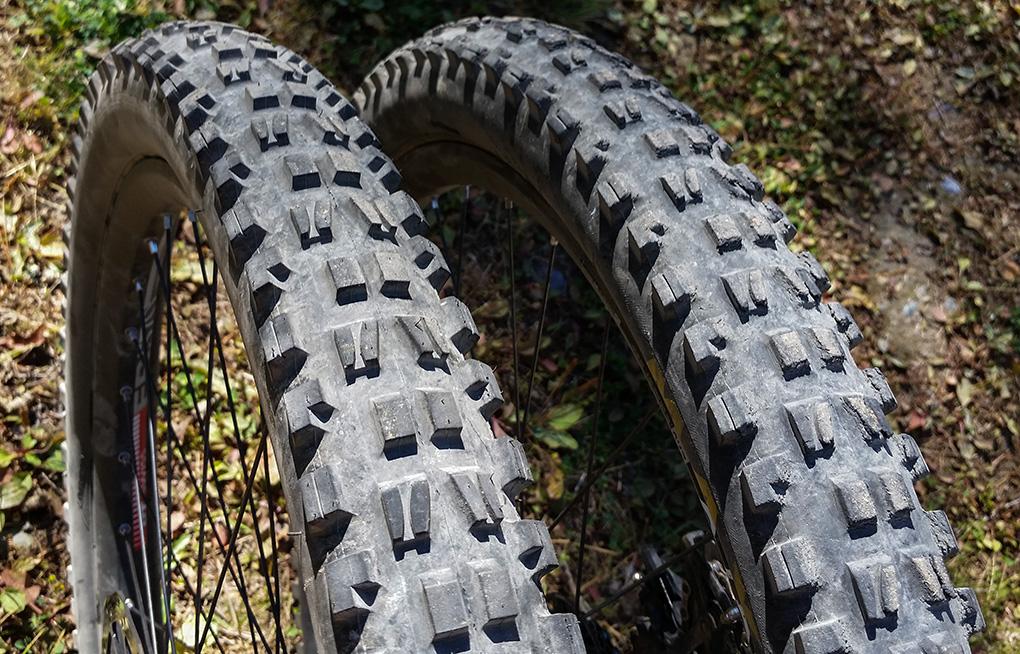Maxxis, the prominent tire manufacturer known for its high-performance products, has announced a significant shift in its branding strategy by discontinuing the “Wide Trail” labeling on its tires and packaging. This decision comes as part of a broader initiative to streamline product identification and enhance consumer clarity across its extensive range of off-road and mountain biking tires. The move has sparked discussions within the biking community, prompting questions about its potential impact on product performance perception and rider experience. As Maxxis continues to innovate and adapt to the evolving demands of the market, this renaming effort raises important considerations for both new and seasoned cyclists alike.
Maxxis Ends Wide Trail Labeling to Simplify Tire Selection Process
In a notable change aimed at enhancing the consumer experience, Maxxis has decided to eliminate the Wide Trail labeling from its tire lineup and packaging. This decision is part of a broader strategy to streamline the tire selection process for riders, ensuring a more intuitive choice when browsing for new tires. By simplifying its nomenclature, Maxxis aims to reduce confusion among cyclists, particularly those new to the sport who may struggle with technical tire specifications. The company emphasizes that this move will allow customers to focus on performance attributes rather than get sidetracked by complex labeling.
As part of this transition, Maxxis will continue to provide high-quality tires across various categories, tailored to meet the demands of different riding styles. The company assures its clientele that the elimination of the labeling will not affect the tire’s design or functionality. The focus will remain on informing consumers through enhanced product descriptions and performance metrics. Maxxis encourages customers to rely on the easy-to-understand classifications related to tire traction, durability, and other key performance statistics, promoting a smoother decision-making process.
Impact on Consumers and Retailers Following the Recent Tire Rebranding
The recent decision by Maxxis to discontinue the Wide Trail labeling on its tire products has sent tremors through both consumer circles and retail environments. For consumers, particularly mountain bikers and off-road enthusiasts, this change means navigating the complex landscape of tire specifications without the familiar designation. Some may feel uncertain about whether the newer models will match their performance expectations. As a result, many are likely to seek extensive reviews and feedback from fellow riders to adapt to this new nomenclature. Key consumer concerns include:
- Product Compatibility: Will the new tires fit as well as their predecessors?
- Performance Implications: How will the change affect traction, handling, and stability?
- Search for Clarity: Many consumers are looking for clear distinctions in other product labels.
Retailers, on the other hand, face a new challenge. They must re-educate their staff and consumers alike on the updated tire offerings without the Wide Trail label. This entails revising marketing materials, retraining sales teams, and updating inventory systems to reflect this significant shift in branding. Retailers will need to leverage their relationships with consumers and utilize their platforms to maintain trust and understanding about the new product lines. As they adapt to these changes, the following strategies may become essential:
- Enhanced Training: Staff training on the new features of tires replacing the Wide Trail label.
- Consumer Education: Informative workshops or material to clarify the benefits and applications of the revamped tires.
- Feedback Loop: Establishing mechanisms to gather consumer reactions and preferences to better stock their inventory.
Expert Recommendations for Transitioning to New Maxxis Tire Designations
The discontinuation of the Wide Trail labeling marks a significant shift in Maxxis’s approach to tire designations. As cyclists and enthusiasts adjust to this change, experts recommend familiarizing yourself with the new designation system. The following guidelines can help ease the transition:
- Consult Manufacturer Guidelines: Review Maxxis’s official documentation on the new labeling to understand the specifications and what they entail for performance and compatibility.
- Test Compatibility: Before purchasing, ensure that your bike’s frame and components can accommodate the new tire sizes without compromising performance.
- Seek Professional Advice: Visit your local bike shop for insights from professionals who are well-versed in the latest Maxxis offerings and can provide personalized recommendations.
- Join Online Communities: Engage in forums and social media groups dedicated to cycling to gain insights and experiences from fellow riders who have already made the switch.
In addition to these recommendations, it’s important to stay updated with tire reviews and user testimonials to gauge the performance of the newly designated Maxxis tires. For a concise overview, consider the following table highlighting key features of popular new tire models:
| Model | Tread Type | Best For |
|---|---|---|
| Minion DHF | Directional | Loose, Wet Conditions |
| Ardent | Multi-Condition | Trail Riding |
| Ikon | Lightweight | Cross-Country |
Following these expert recommendations can facilitate a seamless transition, ensuring that you remain equipped with the right tires for your riding style and terrain. Embracing the changes now will enhance your cycling experience and performance.
Concluding Remarks
In conclusion, the discontinuation of the Wide Trail labeling by Maxxis marks a significant shift in the company’s approach to tire design and marketing. As the cycling industry continues to evolve, manufacturers are adapting their strategies to meet the demands of both competitive and recreational riders. While some enthusiasts may mourn the removal of this designation, others may welcome the simplification of options that comes with it. Maxxis remains committed to delivering high-performance products tailored to diverse riding styles, and it will be interesting to see how this change affects consumer choices moving forward. As always, staying informed about product developments will help riders make the best decisions for their biking needs.











